This is what happens to aluminum when hit by a 1/2 oz (~14g) piece of plastic going 15,000 mph (~24000 km/h) in space  https://abs.twimg.com/emoji/v2/... draggable="false" alt="💥" title="Symbol für eine Kollision" aria-label="Emoji: Symbol für eine Kollision">
https://abs.twimg.com/emoji/v2/... draggable="false" alt="💥" title="Symbol für eine Kollision" aria-label="Emoji: Symbol für eine Kollision">
#Hypervelocity
#Hypervelocity
#Hypervelocity
That’s the great thing about Kinetic Energy (KE):
KE = ½mv^2
Velocity is *far* more important than mass. Doesn’t matter how light something is...if it’s moving really fast, it can pack a serious punch!
#Hypervelocity
KE = ½mv^2
Velocity is *far* more important than mass. Doesn’t matter how light something is...if it’s moving really fast, it can pack a serious punch!
#Hypervelocity
For quick reference:
a high-powered rifle bullet goes about 1500 mph
(wayyy slower than that 15000 mph plastic space debris!)
#Hypervelocity
a high-powered rifle bullet goes about 1500 mph
(wayyy slower than that 15000 mph plastic space debris!)
#Hypervelocity
So how do we protect spacecraft against this orbital shooting range?
 https://abs.twimg.com/emoji/v2/... draggable="false" alt="🛡" title="Schild" aria-label="Emoji: Schild">Advanced Shields
https://abs.twimg.com/emoji/v2/... draggable="false" alt="🛡" title="Schild" aria-label="Emoji: Schild">Advanced Shields https://abs.twimg.com/emoji/v2/... draggable="false" alt="🛡" title="Schild" aria-label="Emoji: Schild">
https://abs.twimg.com/emoji/v2/... draggable="false" alt="🛡" title="Schild" aria-label="Emoji: Schild">
There are various concepts that have been developed and tested, and now help to protect spacecraft like the @Space_Station https://abs.twimg.com/emoji/v2/... draggable="false" alt="🛰" title="Satellit" aria-label="Emoji: Satellit">
https://abs.twimg.com/emoji/v2/... draggable="false" alt="🛰" title="Satellit" aria-label="Emoji: Satellit">
Here are some different types...
#Hypervelocity
There are various concepts that have been developed and tested, and now help to protect spacecraft like the @Space_Station
Here are some different types...
#Hypervelocity
This is a “Monolithic Shield”  https://abs.twimg.com/emoji/v2/... draggable="false" alt="🛡" title="Schild" aria-label="Emoji: Schild">
https://abs.twimg.com/emoji/v2/... draggable="false" alt="🛡" title="Schild" aria-label="Emoji: Schild">
It’s your brute force approach and does not win any points for ingenuity.
It’s simply a slab of aluminum capable of absorbing the entire force of the impact.
#Hypervelocity
It’s your brute force approach and does not win any points for ingenuity.
It’s simply a slab of aluminum capable of absorbing the entire force of the impact.
#Hypervelocity
This is a “Whipple Shield” https://abs.twimg.com/emoji/v2/... draggable="false" alt="🛡" title="Schild" aria-label="Emoji: Schild">
https://abs.twimg.com/emoji/v2/... draggable="false" alt="🛡" title="Schild" aria-label="Emoji: Schild">
It’s the first spacecraft shield ever implemented. Introduced by Fred Whipple in the 1940’s, it’s still used today.
It uses a sacrificial bumper -usually aluminum- in front of the spacecraft, allowing it to absorb the initial impact.
#Hypervelocity
It’s the first spacecraft shield ever implemented. Introduced by Fred Whipple in the 1940’s, it’s still used today.
It uses a sacrificial bumper -usually aluminum- in front of the spacecraft, allowing it to absorb the initial impact.
#Hypervelocity
This is a “Stuffed Whipple” Shield  https://abs.twimg.com/emoji/v2/... draggable="false" alt="🛡" title="Schild" aria-label="Emoji: Schild">
https://abs.twimg.com/emoji/v2/... draggable="false" alt="🛡" title="Schild" aria-label="Emoji: Schild">
It’s a variation of the simple Whipple.
Layers of Nextel and Kevlar are inserted between the bumper and rear wall to shock and pulverize the debris cloud even more https://abs.twimg.com/emoji/v2/... draggable="false" alt="💪" title="Angespannter Bizeps" aria-label="Emoji: Angespannter Bizeps">
https://abs.twimg.com/emoji/v2/... draggable="false" alt="💪" title="Angespannter Bizeps" aria-label="Emoji: Angespannter Bizeps">
#Hypervelocity
It’s a variation of the simple Whipple.
Layers of Nextel and Kevlar are inserted between the bumper and rear wall to shock and pulverize the debris cloud even more
#Hypervelocity
This is a “Multi Shock Shield”  https://abs.twimg.com/emoji/v2/... draggable="false" alt="🛡" title="Schild" aria-label="Emoji: Schild">
https://abs.twimg.com/emoji/v2/... draggable="false" alt="🛡" title="Schild" aria-label="Emoji: Schild">
 https://abs.twimg.com/emoji/v2/... draggable="false" alt="🏆" title="Trophäe" aria-label="Emoji: Trophäe">This is a popular design
https://abs.twimg.com/emoji/v2/... draggable="false" alt="🏆" title="Trophäe" aria-label="Emoji: Trophäe">This is a popular design
It staggers layers of Nextel at specified standoff distances. The multiple layers repeatedly shock that debris until the remaining fragments are harmless against the rear wall.
#Hypervelocity
It staggers layers of Nextel at specified standoff distances. The multiple layers repeatedly shock that debris until the remaining fragments are harmless against the rear wall.
#Hypervelocity
This is a “Honeycomb Panel” https://abs.twimg.com/emoji/v2/... draggable="false" alt="🛡" title="Schild" aria-label="Emoji: Schild">
https://abs.twimg.com/emoji/v2/... draggable="false" alt="🛡" title="Schild" aria-label="Emoji: Schild">
Many spacecraft are designed using Aluminum honeycomb sandwich panel structures (what’s with all the food refs?).
These panels are tested and evaluated for their MMOD shielding capabilities.
MMOD = MicroMeteoroid and Orbital Debris
#Hypervelocity
Many spacecraft are designed using Aluminum honeycomb sandwich panel structures (what’s with all the food refs?).
These panels are tested and evaluated for their MMOD shielding capabilities.
MMOD = MicroMeteoroid and Orbital Debris
#Hypervelocity
This is a “Foam Panel”  https://abs.twimg.com/emoji/v2/... draggable="false" alt="🛡" title="Schild" aria-label="Emoji: Schild">
https://abs.twimg.com/emoji/v2/... draggable="false" alt="🛡" title="Schild" aria-label="Emoji: Schild">
Metallic foam sandwich panels provide structural support - they’re similar to honeycomb panels, but have improved MMOD shielding capabilities.
Metallic foam panels are being tested and evaluated for future spacecraft designs.
#Hypervelocity
Metallic foam sandwich panels provide structural support - they’re similar to honeycomb panels, but have improved MMOD shielding capabilities.
Metallic foam panels are being tested and evaluated for future spacecraft designs.
#Hypervelocity
Lastly, this is a “Transhab Shield” https://abs.twimg.com/emoji/v2/... draggable="false" alt="🛡" title="Schild" aria-label="Emoji: Schild">
https://abs.twimg.com/emoji/v2/... draggable="false" alt="🛡" title="Schild" aria-label="Emoji: Schild">
This shield is a prototype developed for a future human-rated mission to Mars, and consists of layers of Mylar, Nextel, Kevlar, & Foam (cored out).
Foam is used because it’s desired that shielding be compressible for launch.
#Hypervelocity
This shield is a prototype developed for a future human-rated mission to Mars, and consists of layers of Mylar, Nextel, Kevlar, & Foam (cored out).
Foam is used because it’s desired that shielding be compressible for launch.
#Hypervelocity
For more information on shield development and hypervelocity impact technologies:
@Astromaterials https://abs.twimg.com/emoji/v2/... draggable="false" alt="💥" title="Symbol für eine Kollision" aria-label="Emoji: Symbol für eine Kollision">
https://abs.twimg.com/emoji/v2/... draggable="false" alt="💥" title="Symbol für eine Kollision" aria-label="Emoji: Symbol für eine Kollision">
https://hvit.jsc.nasa.gov/shield-development/
https://hvit.jsc.nasa.gov/shield-de... href="https://twtext.com//hashtag/Hypervelocity"> #Hypervelocity
@Astromaterials
https://hvit.jsc.nasa.gov/shield-development/
This is an impact test for the @Space_Station lab module shielding https://abs.twimg.com/emoji/v2/... draggable="false" alt="💥" title="Symbol für eine Kollision" aria-label="Emoji: Symbol für eine Kollision">
https://abs.twimg.com/emoji/v2/... draggable="false" alt="💥" title="Symbol für eine Kollision" aria-label="Emoji: Symbol für eine Kollision">
Purpose: generate damage representative of potential impacts on the ISS
Video: a ~0.4 inch (10 mm) aluminum sphere “micrometeoroid” impacting an orbital debris shield @ 12300 mph (~19800 km/hr)
#Hypervelocity
Purpose: generate damage representative of potential impacts on the ISS
Video: a ~0.4 inch (10 mm) aluminum sphere “micrometeoroid” impacting an orbital debris shield @ 12300 mph (~19800 km/hr)
#Hypervelocity
For any fans of shooting/marksmanship *and* space sciences, I think I found your perfect job:
High Velocity Impact Testing and Advanced Spacecraft Shielding Materials.
 https://abs.twimg.com/emoji/v2/... draggable="false" alt="👉" title="Rückhand Zeigefinger nach rechts" aria-label="Emoji: Rückhand Zeigefinger nach rechts"> https://hvit.jsc.nasa.gov/hypervelocity-testing/
https://abs.twimg.com/emoji/v2/... draggable="false" alt="👉" title="Rückhand Zeigefinger nach rechts" aria-label="Emoji: Rückhand Zeigefinger nach rechts"> https://hvit.jsc.nasa.gov/hypervelocity-testing/
https://hvit.jsc.nasa.gov/hypervelo... href="https://twtext.com//hashtag/Hypervelocity"> #Hypervelocity #Engineering
High Velocity Impact Testing and Advanced Spacecraft Shielding Materials.

 Read on Twitter
Read on Twitter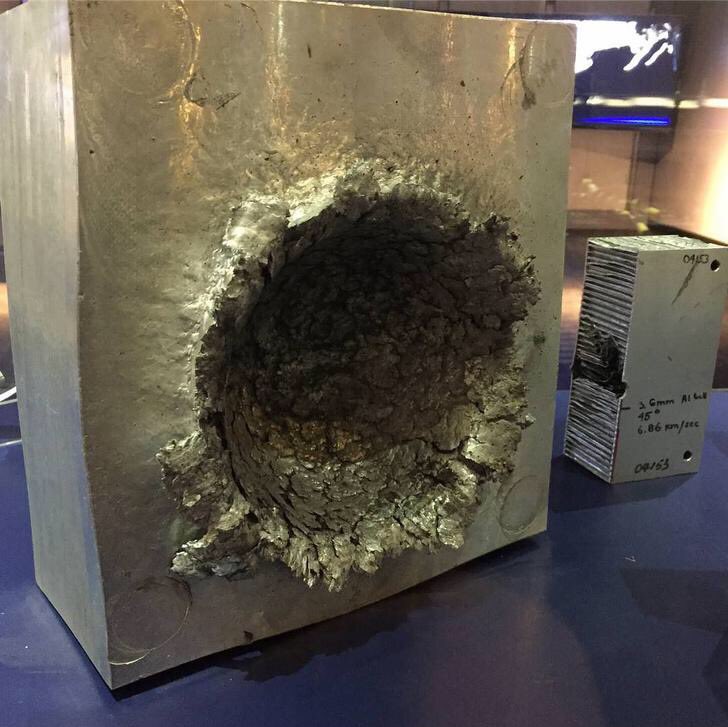 #Hypervelocity" title="This is what happens to aluminum when hit by a 1/2 oz (~14g) piece of plastic going 15,000 mph (~24000 km/h) in space https://abs.twimg.com/emoji/v2/... draggable="false" alt="💥" title="Symbol für eine Kollision" aria-label="Emoji: Symbol für eine Kollision"> #Hypervelocity" class="img-responsive" style="max-width:100%;"/>
#Hypervelocity" title="This is what happens to aluminum when hit by a 1/2 oz (~14g) piece of plastic going 15,000 mph (~24000 km/h) in space https://abs.twimg.com/emoji/v2/... draggable="false" alt="💥" title="Symbol für eine Kollision" aria-label="Emoji: Symbol für eine Kollision"> #Hypervelocity" class="img-responsive" style="max-width:100%;"/>
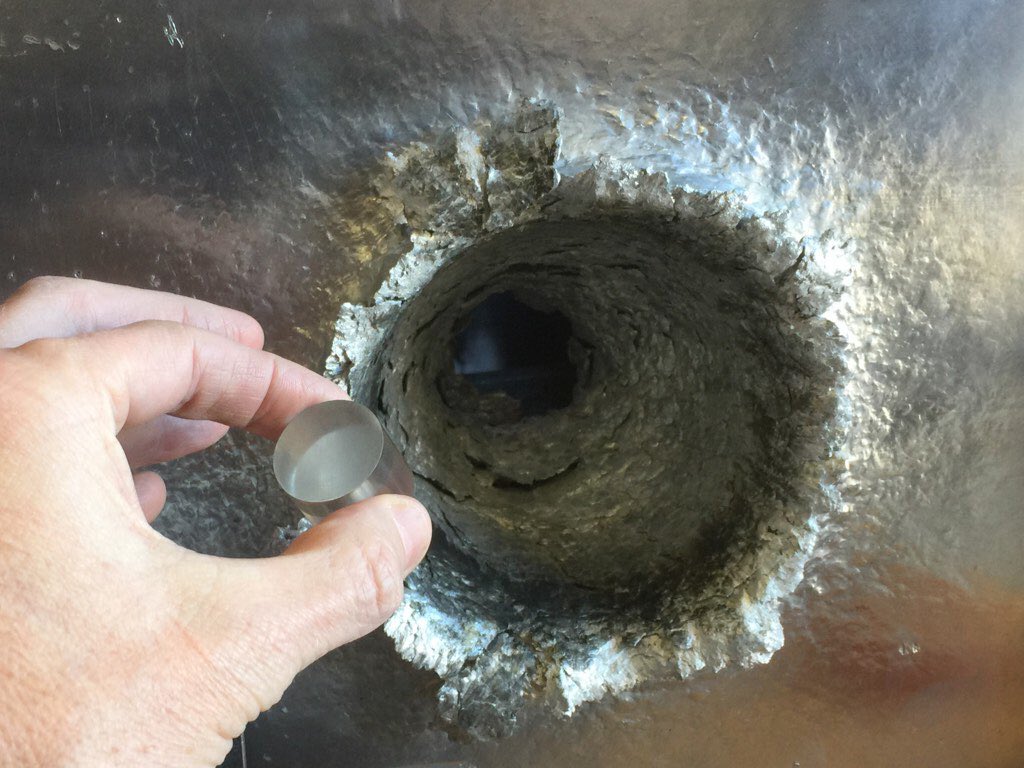 shows the violence a little piece of orbiting space debris can wreak on a spacecraft https://abs.twimg.com/emoji/v2/... draggable="false" alt="🛰" title="Satellit" aria-label="Emoji: Satellit"> #Hypervelocity" title="https://abs.twimg.com/emoji/v2/... draggable="false" alt="👆" title="Rückhand Zeigefinger nach oben" aria-label="Emoji: Rückhand Zeigefinger nach oben"> shows the violence a little piece of orbiting space debris can wreak on a spacecraft https://abs.twimg.com/emoji/v2/... draggable="false" alt="🛰" title="Satellit" aria-label="Emoji: Satellit"> #Hypervelocity" class="img-responsive" style="max-width:100%;"/>
shows the violence a little piece of orbiting space debris can wreak on a spacecraft https://abs.twimg.com/emoji/v2/... draggable="false" alt="🛰" title="Satellit" aria-label="Emoji: Satellit"> #Hypervelocity" title="https://abs.twimg.com/emoji/v2/... draggable="false" alt="👆" title="Rückhand Zeigefinger nach oben" aria-label="Emoji: Rückhand Zeigefinger nach oben"> shows the violence a little piece of orbiting space debris can wreak on a spacecraft https://abs.twimg.com/emoji/v2/... draggable="false" alt="🛰" title="Satellit" aria-label="Emoji: Satellit"> #Hypervelocity" class="img-responsive" style="max-width:100%;"/>
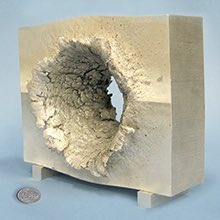 It’s your brute force approach and does not win any points for ingenuity.It’s simply a slab of aluminum capable of absorbing the entire force of the impact. #Hypervelocity" title="This is a “Monolithic Shield” https://abs.twimg.com/emoji/v2/... draggable="false" alt="🛡" title="Schild" aria-label="Emoji: Schild">It’s your brute force approach and does not win any points for ingenuity.It’s simply a slab of aluminum capable of absorbing the entire force of the impact. #Hypervelocity" class="img-responsive" style="max-width:100%;"/>
It’s your brute force approach and does not win any points for ingenuity.It’s simply a slab of aluminum capable of absorbing the entire force of the impact. #Hypervelocity" title="This is a “Monolithic Shield” https://abs.twimg.com/emoji/v2/... draggable="false" alt="🛡" title="Schild" aria-label="Emoji: Schild">It’s your brute force approach and does not win any points for ingenuity.It’s simply a slab of aluminum capable of absorbing the entire force of the impact. #Hypervelocity" class="img-responsive" style="max-width:100%;"/>
 It’s the first spacecraft shield ever implemented. Introduced by Fred Whipple in the 1940’s, it’s still used today.It uses a sacrificial bumper -usually aluminum- in front of the spacecraft, allowing it to absorb the initial impact. #Hypervelocity" title="This is a “Whipple Shield”https://abs.twimg.com/emoji/v2/... draggable="false" alt="🛡" title="Schild" aria-label="Emoji: Schild">It’s the first spacecraft shield ever implemented. Introduced by Fred Whipple in the 1940’s, it’s still used today.It uses a sacrificial bumper -usually aluminum- in front of the spacecraft, allowing it to absorb the initial impact. #Hypervelocity" class="img-responsive" style="max-width:100%;"/>
It’s the first spacecraft shield ever implemented. Introduced by Fred Whipple in the 1940’s, it’s still used today.It uses a sacrificial bumper -usually aluminum- in front of the spacecraft, allowing it to absorb the initial impact. #Hypervelocity" title="This is a “Whipple Shield”https://abs.twimg.com/emoji/v2/... draggable="false" alt="🛡" title="Schild" aria-label="Emoji: Schild">It’s the first spacecraft shield ever implemented. Introduced by Fred Whipple in the 1940’s, it’s still used today.It uses a sacrificial bumper -usually aluminum- in front of the spacecraft, allowing it to absorb the initial impact. #Hypervelocity" class="img-responsive" style="max-width:100%;"/>
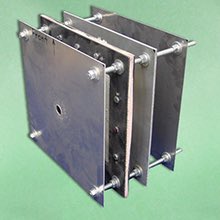 It’s a variation of the simple Whipple. Layers of Nextel and Kevlar are inserted between the bumper and rear wall to shock and pulverize the debris cloud even more https://abs.twimg.com/emoji/v2/... draggable="false" alt="💪" title="Angespannter Bizeps" aria-label="Emoji: Angespannter Bizeps"> #Hypervelocity" title="This is a “Stuffed Whipple” Shield https://abs.twimg.com/emoji/v2/... draggable="false" alt="🛡" title="Schild" aria-label="Emoji: Schild">It’s a variation of the simple Whipple. Layers of Nextel and Kevlar are inserted between the bumper and rear wall to shock and pulverize the debris cloud even more https://abs.twimg.com/emoji/v2/... draggable="false" alt="💪" title="Angespannter Bizeps" aria-label="Emoji: Angespannter Bizeps"> #Hypervelocity" class="img-responsive" style="max-width:100%;"/>
It’s a variation of the simple Whipple. Layers of Nextel and Kevlar are inserted between the bumper and rear wall to shock and pulverize the debris cloud even more https://abs.twimg.com/emoji/v2/... draggable="false" alt="💪" title="Angespannter Bizeps" aria-label="Emoji: Angespannter Bizeps"> #Hypervelocity" title="This is a “Stuffed Whipple” Shield https://abs.twimg.com/emoji/v2/... draggable="false" alt="🛡" title="Schild" aria-label="Emoji: Schild">It’s a variation of the simple Whipple. Layers of Nextel and Kevlar are inserted between the bumper and rear wall to shock and pulverize the debris cloud even more https://abs.twimg.com/emoji/v2/... draggable="false" alt="💪" title="Angespannter Bizeps" aria-label="Emoji: Angespannter Bizeps"> #Hypervelocity" class="img-responsive" style="max-width:100%;"/>
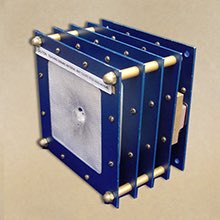 https://abs.twimg.com/emoji/v2/... draggable="false" alt="🏆" title="Trophäe" aria-label="Emoji: Trophäe">This is a popular design It staggers layers of Nextel at specified standoff distances. The multiple layers repeatedly shock that debris until the remaining fragments are harmless against the rear wall. #Hypervelocity" title="This is a “Multi Shock Shield” https://abs.twimg.com/emoji/v2/... draggable="false" alt="🛡" title="Schild" aria-label="Emoji: Schild">https://abs.twimg.com/emoji/v2/... draggable="false" alt="🏆" title="Trophäe" aria-label="Emoji: Trophäe">This is a popular design It staggers layers of Nextel at specified standoff distances. The multiple layers repeatedly shock that debris until the remaining fragments are harmless against the rear wall. #Hypervelocity" class="img-responsive" style="max-width:100%;"/>
https://abs.twimg.com/emoji/v2/... draggable="false" alt="🏆" title="Trophäe" aria-label="Emoji: Trophäe">This is a popular design It staggers layers of Nextel at specified standoff distances. The multiple layers repeatedly shock that debris until the remaining fragments are harmless against the rear wall. #Hypervelocity" title="This is a “Multi Shock Shield” https://abs.twimg.com/emoji/v2/... draggable="false" alt="🛡" title="Schild" aria-label="Emoji: Schild">https://abs.twimg.com/emoji/v2/... draggable="false" alt="🏆" title="Trophäe" aria-label="Emoji: Trophäe">This is a popular design It staggers layers of Nextel at specified standoff distances. The multiple layers repeatedly shock that debris until the remaining fragments are harmless against the rear wall. #Hypervelocity" class="img-responsive" style="max-width:100%;"/>
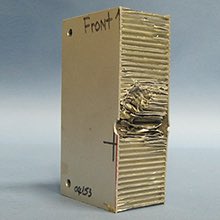 Many spacecraft are designed using Aluminum honeycomb sandwich panel structures (what’s with all the food refs?).These panels are tested and evaluated for their MMOD shielding capabilities.MMOD = MicroMeteoroid and Orbital Debris #Hypervelocity" title="This is a “Honeycomb Panel”https://abs.twimg.com/emoji/v2/... draggable="false" alt="🛡" title="Schild" aria-label="Emoji: Schild">Many spacecraft are designed using Aluminum honeycomb sandwich panel structures (what’s with all the food refs?).These panels are tested and evaluated for their MMOD shielding capabilities.MMOD = MicroMeteoroid and Orbital Debris #Hypervelocity" class="img-responsive" style="max-width:100%;"/>
Many spacecraft are designed using Aluminum honeycomb sandwich panel structures (what’s with all the food refs?).These panels are tested and evaluated for their MMOD shielding capabilities.MMOD = MicroMeteoroid and Orbital Debris #Hypervelocity" title="This is a “Honeycomb Panel”https://abs.twimg.com/emoji/v2/... draggable="false" alt="🛡" title="Schild" aria-label="Emoji: Schild">Many spacecraft are designed using Aluminum honeycomb sandwich panel structures (what’s with all the food refs?).These panels are tested and evaluated for their MMOD shielding capabilities.MMOD = MicroMeteoroid and Orbital Debris #Hypervelocity" class="img-responsive" style="max-width:100%;"/>
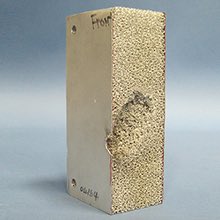 Metallic foam sandwich panels provide structural support - they’re similar to honeycomb panels, but have improved MMOD shielding capabilities.Metallic foam panels are being tested and evaluated for future spacecraft designs. #Hypervelocity" title="This is a “Foam Panel” https://abs.twimg.com/emoji/v2/... draggable="false" alt="🛡" title="Schild" aria-label="Emoji: Schild">Metallic foam sandwich panels provide structural support - they’re similar to honeycomb panels, but have improved MMOD shielding capabilities.Metallic foam panels are being tested and evaluated for future spacecraft designs. #Hypervelocity" class="img-responsive" style="max-width:100%;"/>
Metallic foam sandwich panels provide structural support - they’re similar to honeycomb panels, but have improved MMOD shielding capabilities.Metallic foam panels are being tested and evaluated for future spacecraft designs. #Hypervelocity" title="This is a “Foam Panel” https://abs.twimg.com/emoji/v2/... draggable="false" alt="🛡" title="Schild" aria-label="Emoji: Schild">Metallic foam sandwich panels provide structural support - they’re similar to honeycomb panels, but have improved MMOD shielding capabilities.Metallic foam panels are being tested and evaluated for future spacecraft designs. #Hypervelocity" class="img-responsive" style="max-width:100%;"/>
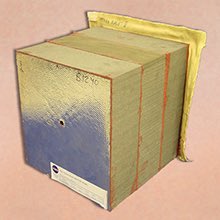 This shield is a prototype developed for a future human-rated mission to Mars, and consists of layers of Mylar, Nextel, Kevlar, & Foam (cored out).Foam is used because it’s desired that shielding be compressible for launch. #Hypervelocity" title="Lastly, this is a “Transhab Shield”https://abs.twimg.com/emoji/v2/... draggable="false" alt="🛡" title="Schild" aria-label="Emoji: Schild">This shield is a prototype developed for a future human-rated mission to Mars, and consists of layers of Mylar, Nextel, Kevlar, & Foam (cored out).Foam is used because it’s desired that shielding be compressible for launch. #Hypervelocity" class="img-responsive" style="max-width:100%;"/>
This shield is a prototype developed for a future human-rated mission to Mars, and consists of layers of Mylar, Nextel, Kevlar, & Foam (cored out).Foam is used because it’s desired that shielding be compressible for launch. #Hypervelocity" title="Lastly, this is a “Transhab Shield”https://abs.twimg.com/emoji/v2/... draggable="false" alt="🛡" title="Schild" aria-label="Emoji: Schild">This shield is a prototype developed for a future human-rated mission to Mars, and consists of layers of Mylar, Nextel, Kevlar, & Foam (cored out).Foam is used because it’s desired that shielding be compressible for launch. #Hypervelocity" class="img-responsive" style="max-width:100%;"/>
 https://hvit.jsc.nasa.gov/shield-de... href="https://twtext.com//hashtag/Hypervelocity"> #Hypervelocity" title="For more information on shield development and hypervelocity impact technologies: @Astromaterials https://abs.twimg.com/emoji/v2/... draggable="false" alt="💥" title="Symbol für eine Kollision" aria-label="Emoji: Symbol für eine Kollision"> https://hvit.jsc.nasa.gov/shield-de... href="https://twtext.com//hashtag/Hypervelocity"> #Hypervelocity" class="img-responsive" style="max-width:100%;"/>
https://hvit.jsc.nasa.gov/shield-de... href="https://twtext.com//hashtag/Hypervelocity"> #Hypervelocity" title="For more information on shield development and hypervelocity impact technologies: @Astromaterials https://abs.twimg.com/emoji/v2/... draggable="false" alt="💥" title="Symbol für eine Kollision" aria-label="Emoji: Symbol für eine Kollision"> https://hvit.jsc.nasa.gov/shield-de... href="https://twtext.com//hashtag/Hypervelocity"> #Hypervelocity" class="img-responsive" style="max-width:100%;"/>


